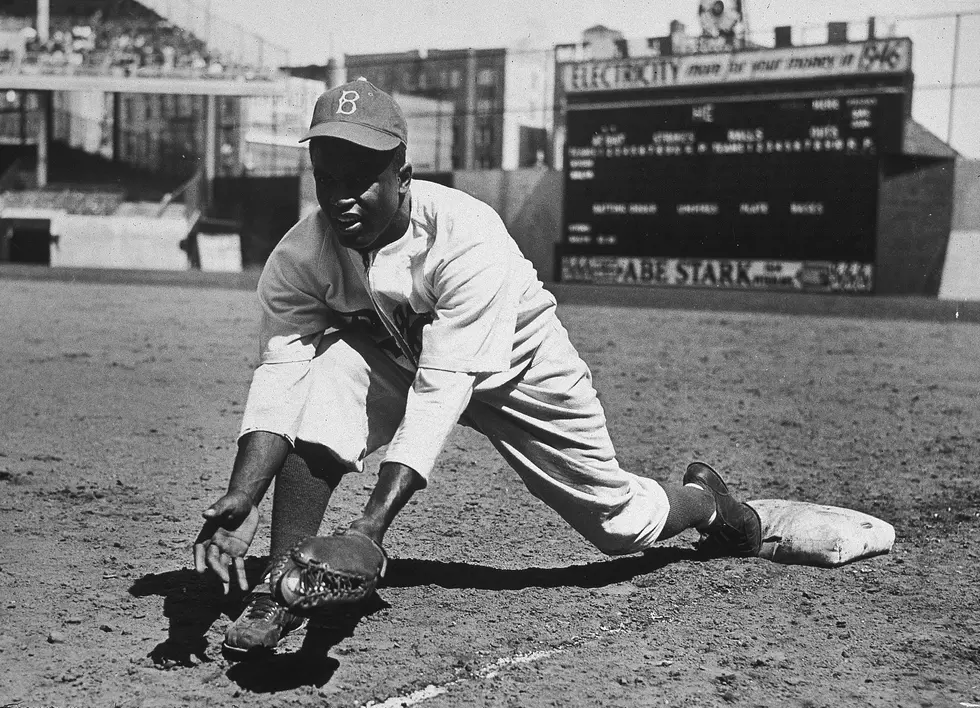
The Best Four-Album Run in Rock: Roundtable
The only thing harder than starting a hot streak is maintaining one. Rock history is filled with artists who failed to improve upon or even match the promise of a particularly successful album.
Of course, rock's true legends have proven themselves to be capable of repeatedly surpassing themselves, sharpening and refining their skills while conquering exciting new creative territory. We asked seven UCR writers to pick the best four-album streaks in rock history, and here's what they chose:
The Who: Tommy (1969), Who's Next (1971), Quadrophenia (1973), The Who by Numbers (1975)
It's almost shocking to consider the ground covered by the Who in the course of their career, who started out as a relatively typical English mod-rock band whose sound mirrored that of acts like the Beatles and the Rolling Stones. But by 1969, Pete Townshend decided to really let his freak flag fly with the rock opera that is Tommy, a release that now stands as a turning point in the history of rock 'n' roll songwriting. That was the tip of the iceberg, though. This was followed by the stunningly powerful Who's Next (1971), the slightly more convoluted yet still robust Quadrophenia (1973) and the surprisingly personal and sophisticated The Who by Numbers (1975). If there was one thing proved by this run of albums, it was that Townshend was one of the era's most proficient and imaginative songwriters and there was practically nothing Roger Daltrey couldn't sing. (Allison Rapp)
Stevie Wonder: Talking Book (1972), Innervisions (1973), Fulfillingness' First Finale (1974) and Songs in the Key of Life (1976)
Stevie Wonder had released a series of youthful, very uneven albums before 1972's Music of My Mind hinted at greatness. Then came Talking Book, a crystallization of Wonder's self-contained genius – and the beginning of one of the best four-album runs in music history. Innervisions, with its very adult themes, was where he became a man in full: Wonder had begun to delve deeply into the failure of the '60s and then constructed a path out of that crushing disappointment. He got personal with 1974's more intimate Fulfillingness' First Finale, opening his heart as he'd earlier opened minds. Then came his undisputed masterpiece, 1976's Songs in the Key of Life. These were tales told like no other could, with such boundless joy, grit, honesty, funk and fire. He'd tentatively titled this project Let's See Life the Way It Is, and – as always – that's just what Wonder did. (Nick DeRiso)
The Beatles: Rubber Soul (1965), Revolver (1966), Sgt. Pepper's Lonely Hearts Club Band (1967), The Beatles (1968)
You won't find another four-album run in history that altered the course of popular music like the Beatles' Rubber Soul through the White Album. Rubber Soul marked a quantum leap in songwriting for the Fab Four and four rock 'n' roll at large, incorporating exotic instrumentation and shifting the genre's focus from singles to albums. Revolver pushed the envelope even further, delving into acid rock, chamber pop, raga rock and the nascent psychedelic movement. An impossibly high bar for any other band to clear, but it was just a warmup for Sgt. Pepper's Lonely Hearts Club Band, an album so steeped in hyperbole it feels tired to list its achievements. Nevertheless: It turned rock 'n' roll into a high art form, epitomized the counterculture and became a standard-bearer for concept albums (even though its concept is flimsy at best). Just when it seemed like the Beatles had achieved everything they possibly could, they returned with their self-titled album — a sprawling, messy, joyful, anguished, introspective masterpiece that displayed all four musicians' personalities across blues, music hall, ska, heavy metal and more. The Beatles didn't just pull off these styles better than their peers; they proved they were possible in the first place. (Bryan Rolli)
The Rolling Stones: Beggars Banquet (1968), Let It Bleed (1969), Sticky Fingers (1971), Exile on Main St. (1972)
Like the Beatles' historic run during the mid- and late-'60s, the Rolling Stones' equally momentous four-album streak - coincidentally started just as the Beatles' was ending - defined an era through its progression. And like the Fab Four, the Stones ended their four classic records with a sprawling double album that revealed the scattered pieces left in their wake. Beggars Banquet was a back-to-basics reaction to 1967's psychedelic splatter Their Satanic Majesties Request, blues for the post-Summer of Love comedown; by 1969's Let It Bleed, they were saying goodbye to the '60s altogether with a set of scarred songs about the decade's dark side. Sticky Fingers is more hopeful, soul music spun through the Stones' filter, but it's on 1972's Exile on Main St. where the band reached its zenith. Darker than any record they've ever made, the two-record collection was made amid addiction and creative struggle - no surprise they'd never sound this raw and vital again. It's the culmination of a four-year and -album run that hasn't been matched since. (Michael Gallucci)
Queen: Sheer Heart Attack (1974), A Night at the Opera (1975), A Day at the Races (1976), News of the World (1977)
Queen spent their first few years figuring out exactly who they were. By the time 1974’s Sheer Heart Attack arrived, they were ready to announce their presence to the world. The LP found the band combining its early progressive influences with pop structures. “Killer Queen” was the breakout single, as Freddie Mercury and company suddenly found themselves as worldwide stars. They were just getting started. Next came A Night at the Opera, a masterpiece that found the band at its bombastic best. No other rock group was bold enough to try anything as grandiose as “Bohemian Rhapsody," the sprawling operatic tune that remains beloved by generations. 1976’s A Day at the Races kept the hits coming, with “Somebody to Love” and “Tie Your Mother Down” ranking among Queen's biggest tracks. The fourth and final album in this incredible run was 1977’s News of the World, a powerful LP that saw the band stripping away their glam sheen for some of the hardest hitting rock songs in their catalog (including “We Will Rock You” and “We Are the Champions”). That’s four incredible albums in four years, a run that’s almost impossible to match. (Corey Irwin)
Foreigner: Foreigner (1977), Double Vision (1978), Head Games (1979), 4 (1981)
On paper, Foreigner hardly seemed like a sure bet. But guitarist Mick Jones quickly proved the naysayers wrong once the British/American band’s self-titled debut hit the shelves in 1977. Powered by the soaring and at times, emotional vocals of Lou Gramm, the fledgling group notched three straight Top 20 hits, starting with “Feels Like the First Time” -- which featured a drum breakdown that Dave Grohl later nicked with his own drumming. Foreigner eventually sold more than five million copies. Double Vision (1978) continued their chart reign with the muscular “Hot Blooded” leading the charge for three additional Top 20 singles. Though their success at radio faded slightly with Head Games (1979), it was only a momentary lull. 4 (1981) found Foreigner scaling back from six members to four with the departure of co-founders Ian McDonald and Al Greenwood. But paired with producer "Mutt" Lange, Foreigner notched their first and only number one album with 4, thanks in part to the mega-success of their power ballad, “Waiting for a Girl Like You.” (Matt Wardlaw)
Led Zeppelin: Led Zeppelin III (1970), Led Zeppelin IV (1971), Houses of the Holy (1973), Physical Graffiti (1975)
Led Zeppelin's first six albums are all essential, so the challenge here is picking which two to leave out. Led Zeppelin and Led Zeppelin II, released just nine months apart in 1969, created the template for pretty much every hard rock and heavy metal album that has followed them. But when the group shifted away from bombastic blues covers and began writing more sophisticated original material, things got even more interesting. 1970's Led Zeppelin III brought acoustic guitars and the group's folk influences to the forefront, and 1971's untitled fourth album merged the heavy and delicate sides of their sound together along with their most consistent songwriting. 1973's Houses of the Holy found Led Zeppelin exploring a dazzling array of new styles and sophisticated arrangements. Two years later, they capped off this incredible run with the double album Physical Graffiti, which revisited all of their past phases while also pushing into exciting new territory with songs such as "Kashmir" and "Trampled Underfoot." (Matthew Wilkening)
37 Rock Albums Recorded in Unconventional Places
Gallery Credit: Allison Rapp
More From WRKI and WINE










